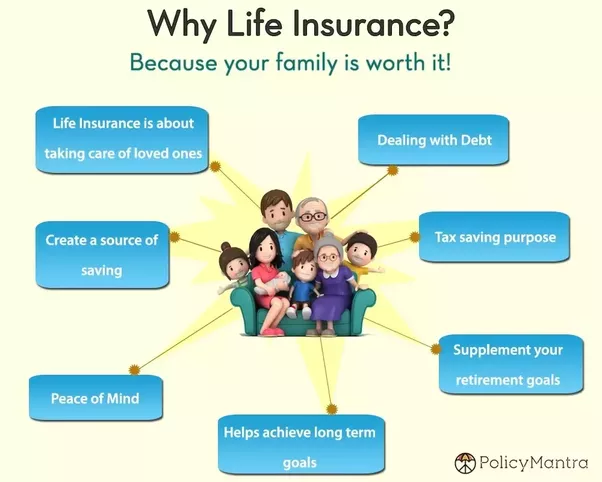All about Pacific Prime
All about Pacific Prime
Blog Article
7 Easy Facts About Pacific Prime Shown
Table of ContentsFacts About Pacific Prime RevealedThe Buzz on Pacific PrimeExamine This Report on Pacific PrimeWhat Does Pacific Prime Mean?Pacific Prime - Questions

This is because the data were gathered for a duration of strong financial performance. Of the approximated 42 million individuals that were without insurance, almost about 420,000 (about 1 percent) were under 65 years of age, the age at which most Americans become qualified for Medicare; 32 million were adults in between ages 18 and 65, about 19 percent of all grownups in this age; and 10 million were children under 18 years old, regarding 13.9 percent of all youngsters (Mills, 2000).
These quotes of the variety of persons without insurance are generated from the annual March Supplement to the Present Population Study (CPS), conducted by the Demographics Bureau. Unless or else kept in mind, national price quotes of people without health and wellness insurance coverage and proportions of the populace with various type of insurance coverage are based on the CPS, one of the most commonly used source of quotes of insurance policy protection and uninsurance rates.
The Basic Principles Of Pacific Prime

Still, the CPS is specifically helpful due to the fact that it generates annual price quotes fairly promptly, reporting the previous year's insurance policy coverage approximates each September, and since it is the basis for a regular set of estimates for even more than 20 years, enabling evaluation of trends in coverage with time. For these reasons, as well as the extensive use the CPS in other studies of insurance protection that exist in this report, we count on CPS quotes, with limitations noted.

The quote of the variety of uninsured individuals expands when a population's insurance status is tracked for numerous years. Over a three-year period starting early in 1993, 72 million individuals, 29 percent of the U.S. https://pacificpr1me.weebly.com/. population, lacked protection for a minimum of one month. Within a solitary year (1994 ), 53 million people experienced a minimum of a month without protection (Bennefield, 1998a)
6 out of every ten uninsured adults are themselves utilized. Although working does boost the possibility that one and one's member of the family will certainly have insurance coverage, it is not a guarantee. Also members of households with two Read Full Article permanent breadwinner have virtually a one-in-ten chance of being uninsured (9.1 percent without insurance rate) (Hoffman and Pohl, 2000).
The Pacific Prime PDFs
New immigrants represent a substantial proportion of people without medical insurance. One analysis has attributed a considerable part of the recent development in the dimension of the united state without insurance populace to immigrants that arrived in the country between 1994 and 1998 (Camarota and Edwards, 2000). Current immigrants (those that concerned the USA within the previous 4 years) do have a high price of being without insurance (46 percent), yet they and their kids represent just 6 percent of those without insurance coverage country wide (Holahan et al., 2001).
The connection between medical insurance and accessibility to care is well established, as documented later in this chapter. Although the partnership between health and wellness insurance coverage and wellness outcomes is neither direct nor basic, an extensive clinical and health and wellness solutions research study literature links medical insurance protection to enhanced accessibility to care, much better quality, and boosted individual and population health and wellness status.
Levels of evaluation for examining the results of uninsurance. This conversation of health insurance policy coverage concentrates mainly on the U.S. population under age 65 due to the fact that basically all Americans 65 and older have Medicare or other public insurance coverage. It focuses especially on those without any type of wellness insurance coverage for any kind of length of time.
Pacific Prime Fundamentals Explained
The troubles encountered by the underinsured are in some respects similar to those faced by the uninsured, although they are typically much less severe. Wellness insurance policy, nonetheless, is neither required neither adequate to acquire access to clinical solutions. The independent and straight effect of health insurance policy coverage on accessibility to health solutions is well established.
Others will certainly get the health and wellness care they require even without medical insurance, by paying for it out of pocket or seeking it from suppliers who use treatment complimentary or at very subsidized rates. For still others, medical insurance alone does not ensure receipt of care because of various other nonfinancial barriers, such as a lack of wellness care suppliers in their neighborhood, limited access to transport, illiteracy, or etymological and cultural differences.
The smart Trick of Pacific Prime That Nobody is Talking About
Official research study concerning uninsured populaces in the USA dates to the late 1920s and very early 1930s when the Board on the Cost of Treatment generated a series of records about financing medical professional workplace check outs and hospitalizations. This issue ended up being prominent as the varieties of medically indigent climbed during the Great Clinical depression.
Report this page